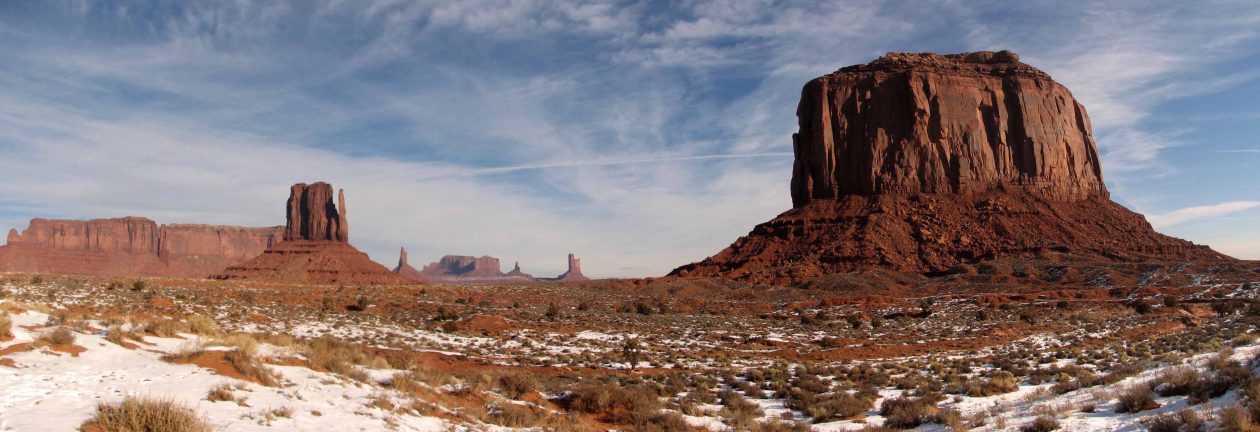Jerusalem, Israel
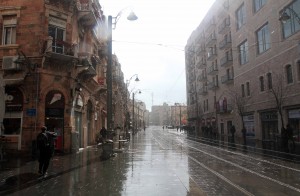
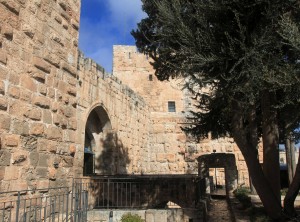
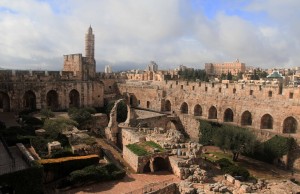
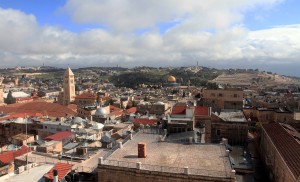
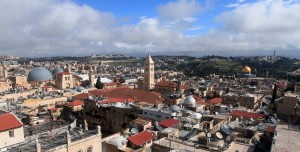
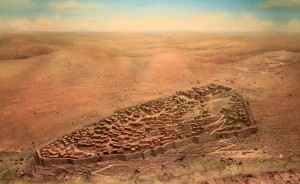
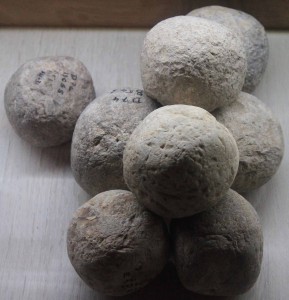
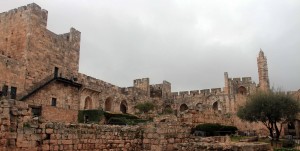
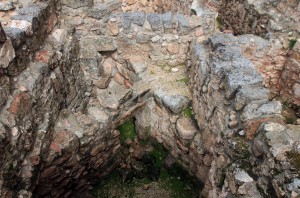
I woke up at 08:50 today, had breakfast (coffee and toast with date spread, jam, and chocolate spread), got dressed, grabbed my camera and umbrella, and walked outside. There was a slight drizzle falling on Jerusalem and it was very cold. I walked toward the Old City and entered inside Jaffa Gate. I then visited the Tower of David (also known as the “Jerusalem Citadel”), which dates to the Mamluk and Ottoman periods. Inside the citadel, are several exhibits detailing the history of Jerusalem; these exhibits cover the Canaanite Period, the First Temple Period, the return to Zion (after the Babylonian invasion and exile of the Jews) and Second Temple Period, the Late Roman Period and Byzantine Period, the Early Islamic Period, the Crusader Period, the Ayoubi Period, the Mamluk Period, the Ottoman Period, the British Mandate, and the present Israel Period. The Tower of David also offers great views of the city from the Phasel Tower; in addition, there were a few exhibits on medicine used in the city, dating back to the earliest eras to today. I walked around the entire citadel, viewed each exhibit, and witnessed many Israeli soldiers come in to the citadel for what may have been a promotion or awards ceremony at the café inside. After touring the Tower of David, I walked outside the museum complex, back through Jaffa Gate, and then walked through the old streets to the Church of the Holy Sepulchre.
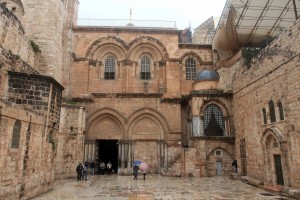
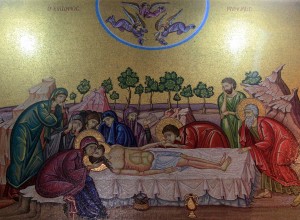
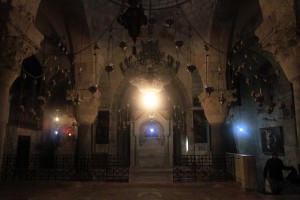
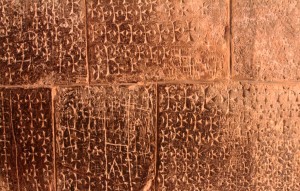
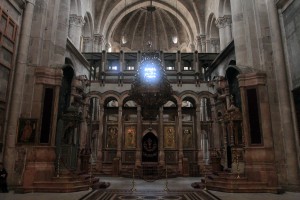
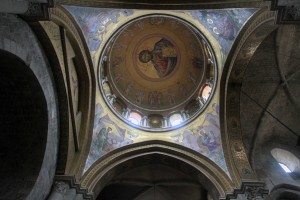
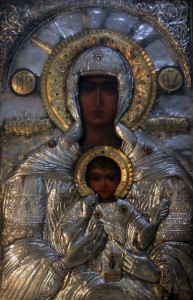
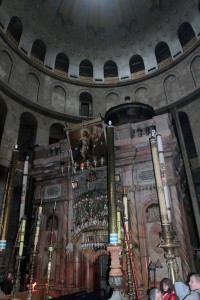
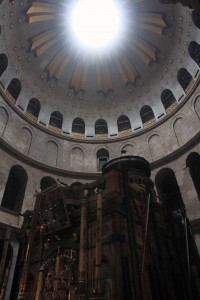
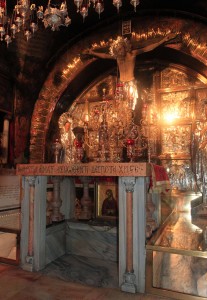
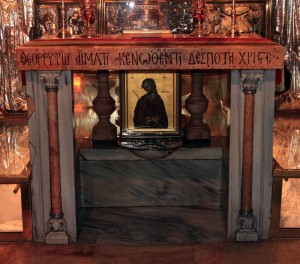
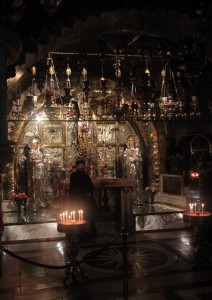

The Church of the Holy Sepulchre is located on the site where Jesus Christ was crucified on Calvary (or “Golgotha”); it also contains the place where Jesus was said to have been buried; although, many Christians believe He was actually buried in the Garden Tomb, north of the Old City, not so near to Calvary. I found the church easy enough by way of signs posted in the old streets and I entered inside through the courtyard. According to history, the Roman Emperor Hadrian ordered a temple dedicated to the goddess Venus over the burial tomb of Christ in the second-century AD; later, Emperor Constantine ordered the temple be replaced by a church around 325/326 AD; during the building of the church, Emperor Constantine’s mother, Helena, discovered the True Cross and a tomb on the site. The church, through time, suffered from fires, damage, invasions, and destructions; today the church is home to branches of Eastern Orthodoxy and Oriental Orthodoxy as well as to Roman Catholicism. Just inside the church is the Stone of Anointing, where, according to tradition – since the time of the Crusades -, is the spot where Jesus’s body was prepared for burial by Joseph of Arimathea; behind the Stone of Anointing is a large mosaic depicting Christ being taken down from the cross and prepared for burial. I then walked to the Chapel of Adam and viewed the rock of Calvary, before continuing around the Catholicon to the Saint Helena Chapel; next, I walked down the stairs from the Saint Helena Chapel to the Chapel of the Invention of the Holy Cross, which is believed to be the place where the True Cross was discovered. I then walked back up the steps and continued around the Catholicon before coming to the rotunda in the center of the Anastasis, beneath the larger of the church’s two domes; in the center of the rotunda is the chapel called Aedicule, which contains the actual Holy Sepulchre; I joined the end of the line of pilgrims entering inside the Aedicule and when I got inside I saw that there were two rooms; the first room has the Angel’s Stone (a fragment of the large stone that sealed the tomb) and the second room has the tomb itself (of course, once again, there is a good chance that Christ was buried in the Garden Tomb and not here). After visiting the Aedicule, I entered inside the Catholicon (the Crusader structure housing the main altar of the church – there are a lot of altars in this church, but this is the main one). Next, I walked up the stairs above the Chapel of Adam (near the entrance) and visited the Altar of the Crucifixion; this was a beautiful altar with many lamps, paintings, mosaics, and statues surrounding it; under the altar is a disc which is believed to be placed over the actual spot where Jesus Christ was crucified; also, at noon, I got to witness a daily ritual where priests (from each of the three branches of Christianity that reside inside the church) came up to the altar with censers, walked around it, and blessed it. I then walked back to the Aedicule and saw that the priests were doing a similar blessing with censers there as well.
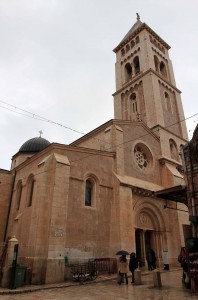
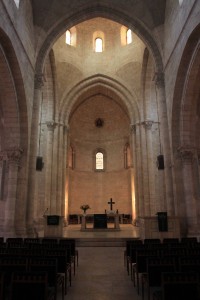
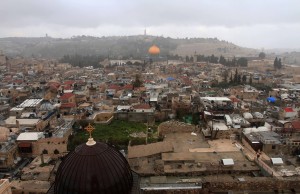
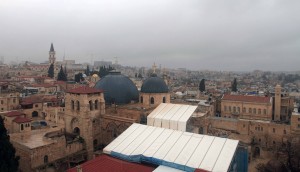
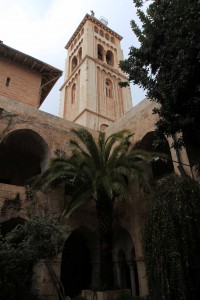
I then exited the church and walked to the nearby Church of the Redeemer, a Lutheran church dedicated by Kaiser Wilhelm II in 1898 AD. I entered inside the church, walked up the many steps to the top of the bell tower, where I had a great view of the Old City of Jerusalem (though the wind was fierce and it was raining outside, so I didn’t spend too much time up there). Next, I walked back down the bell tower’s stairs and entered the archaeological park beneath the church, where excavations have uncovered an old stone quarry, ancient buildings from the time of Christ, and remnants of the original city walls around Jerusalem during the time of Christ (proving that the site of the Church of the Holy Sepulchre was indeed outside the city walls and thus lending credence to the claim that it was where Jesus Christ was crucified on Calvary). I then walked to the courtyard of the church and entered in to an exhibit room covering more of the history of the church.
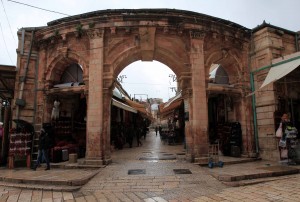
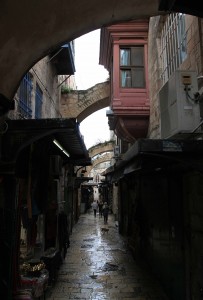
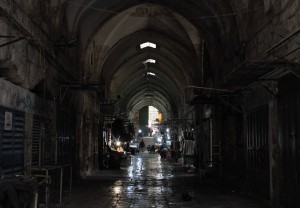
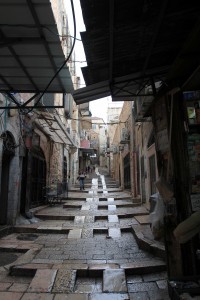
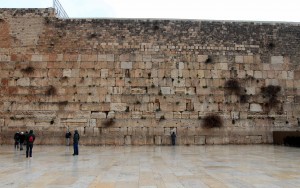
After touring the Church of the Redeemer, I walked around the Old City of Jerusalem some more, through the rain, to the Western Wall (a 57-meter exposed section of the original western flank of the Temple Mount, the holiest site in Judaism). Jewish tradition teaches that the Temple Mount is the focal point of creation; in the center of the mountain lies the “Foundation Stone” of the world, where Adam came in to being; here, also, Abraham, Isaac, and Jacob served God; the First and Second Temples were built upon this mountain and the Ark of the Covenant was set upon the Foundation Stone itself (of course, I learned through my travels, that now the Ark of the Covenant is set inside the Chapel of the Tablet in Axum, Ethiopia . . . supposedly). I walked up to the Western Wall with my head covered, and prayed to God. Then, I walked around the plaza before exiting through the Dung Gate, located at the southwestern corner of the Temple Mount (I would’ve visited the Dome of the Rock too, but I discovered that it is only open to infidels in the early morning and would not be open again until Sunday).
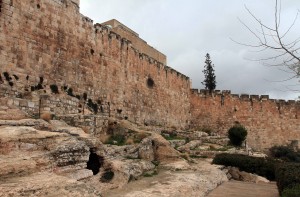
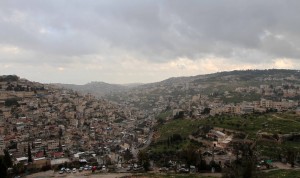
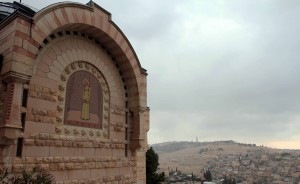
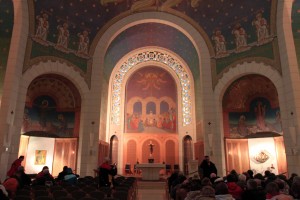
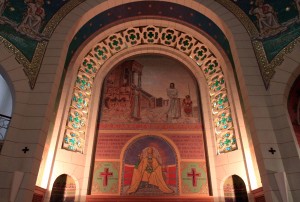
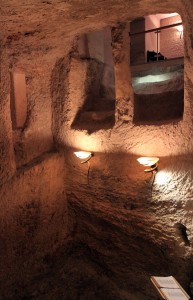
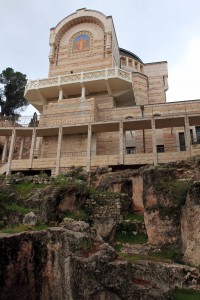
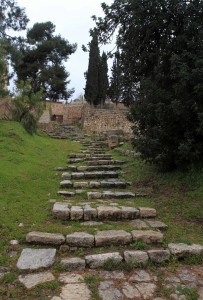
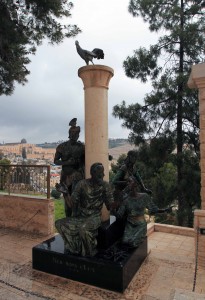
After exiting Dung Gate, I walked to the St. Peter Gallicantu Church, which was built in 1931 AD; originally, there was a Byzantine church built on the spot in 457 AD, but was destroyed by the Fatimid caliph Al-Hakim bi-Amr Allah in 1010 AD. This spot is believed to be where the High Priest Caiaphas’ palace was located, where Jesus Christ was held in custody (in a dungeon below the church; although there are two other spots in Jerusalem that also claim to be the Prison of Christ – one was in the Church of the Holy Sepulchre (but was closed off due to renovations) and the other is in the Ecce Homo Church); also, this being the traditional location of the High Priest Caiaphas’ palace and where Christ was held, it is also where Saint Peter denied Christ three times and throughout the church grounds one can find reminders of this event (a statue with a rooster and Saint Peter, a rooster on top of the weather vane, and other such depictions of roosters). I entered inside the church, walked around the interior, then walked below to the crypt, and then I walked down some more stairs to the Sacred Pit, the dungeon where Christ may have been held. I then entered outside the church, walked by some ruins that may have been part of the High Priest’s palace, and then back up the hill, alongside an ancient staircase, that leads up from the Kidron Valley (many Christians believe that Jesus followed this path down to Gethsemane the night of his arrest).
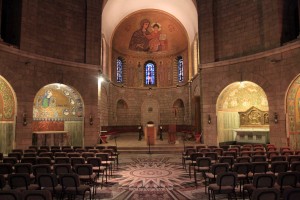
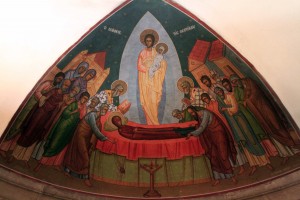
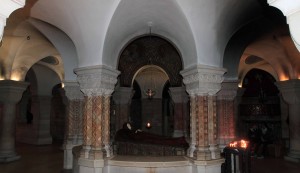
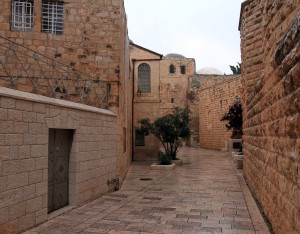
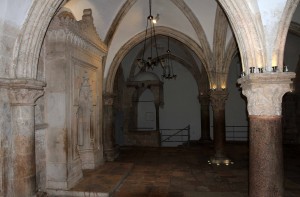
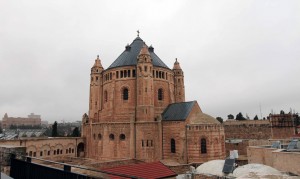
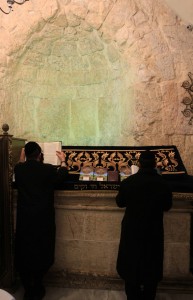
After visiting the St. Peter Gallicantu Church, I walked to Mount Zion (located to the southwest of the Old City walls) and entered in to the Church of Dormition, which is the place where the Virgin Mary is believed to have died. The Church of Dormition was completed in 1910 AD and, like many other structures in Jerusalem, it was built over previous churches. I walked in to the interior of the church and admired the beautiful niches; then I walked downstairs to the crypt where there were more nicely decorated niches and the site ascribed to the Dormition of the Virgin Mary, complete with a statue of her lying peacefully in death. After visiting the crypt and walking around the church, I exited it and walked to the Cenacle (also known as the “Upper Room”); it is located nearby and is generally believed to be the site of the Last Supper; of course, like most ancient structures, it has been destroyed and renovated so many times that pretty much nothing of the original building survives today and the room itself has Gothic architecture; though it is still standing at the historic site of the Last Supper (according to tradition). There isn’t much to see in the room and after visiting it, I walked out the exit and then up to a viewing platform above the room; it was so cold, wet, and windy, that I didn’t spend much time to admire the view and I quickly came back down the steps. I then walked to the adjacent Tomb of David, which is a structure built over the actual tomb itself and inside the room that visitors and worshipers may enter, is a stone altar for the devout to pray at. I walked inside the Tomb of David and witnessed many rabbis reciting the Songs of David and praying at the altar. I then concluded my touring for the day and walked out in to the rain, wind, and icy temperatures, all the way back to the hostel I’m staying at in the New City. By the time I reached the hostel, my pants were soaked and I was freezing; throughout most of today there was much rain and even quite a bit of hail. At the hostel, I enjoyed some beer and almonds I had procured from a nearby market and I went through all the pictures I had taken in the past six days. I then walked to a nearby restaurant on the icy stone walkways; for dinner I had a salad, sweet potato gratin with melted cream of mushrooms and parmesan, and a calzone stuffed with mozzarella, Portobello mushrooms, pesto, and tomatoes; I also had a small bottle of Israeli Cabernet Sauvignon (produced by Gamla) that was strong in tannins and tasted of earthy tones, leather, and black cherries. After that scrumptious meal, I returned to the hostel (it was now snowing outside and Jerusalem was covered in a thin blanket of ice crystals) and got to work on writing today’s long journal entry (it was an eventful day). I then went to sleep around 01:00.
